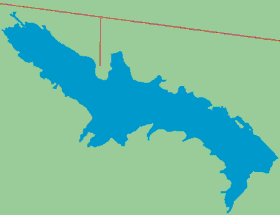Fishing
- Licenses & Regulations
- ShareLunkers
- Fish Identification
- Fish Consumption
- Texas Freshwater Fisheries Center
Water Resources
- Texas Reservoir Levels
- US Army Corps of Engineers
- Texas Water Issues
- Golden Alga
- Aquatic Vegetation
8684 LaVillage Avenue
Waco, Texas 76712
(254) 666-5190
Michael Baird, Biologist
Local Information
- Alvarado Chamber of Commerce
400 E. Hwy 67
Alvarado, Texas 76009
(817) 783-2233
Nearby State Parks:
Alvarado Park Lake
Quick Links: Fishing Regulations | Angling Opportunities | Cover & Structure | Tips & Tactics
Lake Characteristics
Location: Off US 67 three miles west of
I-35W
Surface area: 437 acres
Maximum depth: 20 feet
Impounded: 1966
Water Conditions
Fluctuation: 1-2 feet
Normal Clarity: Stained to murky
Reservoir Controlling Authority
City of Alvarado
(817) 790-3351
Aquatic Vegetation
Bulrush, cattail, water willow
Predominant Fish Species
Lake Records
Stocking History
Latest Survey Report
Lake Maps
None available
Fishing Regulations
All species are currently managed under statewide regulations.
Angling Opportunities
| Species | Poor | Fair | Good | Excellent |
|---|---|---|---|---|
| Largemouth Bass | ||||
| Catfish | ||||
| Crappie | ||||
| White Bass | ||||
| Sunfish |
Fishing Cover/Structure
Fish habitat in this lake is dominated by shoreline stands of bulrush, American water-willow, cattail, and common buttonbush – boat docks and piers, and moderate amounts of bulk heading. The rip-rap dam and over-hanging trees and brush also attract and hold fish throughout much of the year. The Waco Inland Fisheries District built and deployed rectangular PVC fish habitat structures near the lower end of the reservoir to help attract and hold sportfish for anglers. This is the only freshwater reef that has been deployed in Alvarado Park Lake.
Use the Habitat Structure Viewer for an interactive map of fish habitat structures and downloadable GPS coordinates.
Tips & Tactics
Largemouth bass are caught on spinnerbaits, worms, jigs, and crankbaits off the boat docks and from cattails. Channel catfish are caught tightlining or drift fishing shad or blood bait. White bass can be caught on tailspinners and jigs fished on windy shorelines. Crappie are generally caught from submerged brush piles and under docks.
